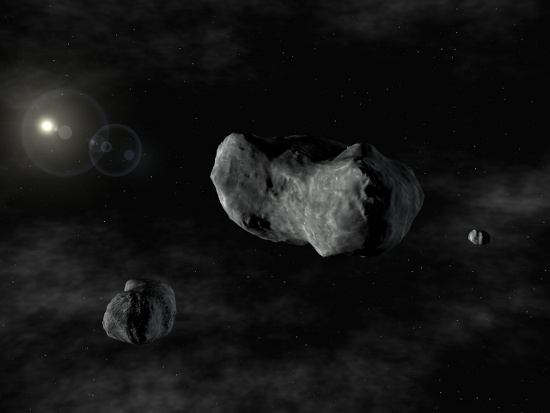The US developed a small meteorite detection system
On February 18, the US Aeronautics and Space Administration (NASA) and scientists from the university and private groups of the country said they were working on developing alarm systems capable of detecting Small objects in space.
This information was published after last week a meteorite explosion in Russia caused meteorite rain in many provinces, causing more than 1,200 people to be injured and 50 hospitalized.

Scientists say the project is called the Solar Crater Alarm System (ATLAS), which will observe the entire sky in night vision, and will be able to detect small meteorites. It has a diameter of 45 meters about a week before it falls to Earth.
For meteorites with a larger diameter (about 150m), the system will allow three weeks notice. It is expected that the US $ 5 million ATLAS system will be put into use by the end of 2015. Scientists say about half a million objects fly around the Earth, but their detection is very difficult to click. small ruler.
Therefore, the development of the above ATLAS system also helps authorities have time to seek measures to protect affected people in the area, even the system can detect the danger. waves of tsunamis through earthquakes
Currently, NASA is managing the Near-Earth Object Program (NEO) and, together with the Arecibo radio telescope with an 305-meter-wide antenna diameter, scientists can observe about 25% of the sky. at night and Puerto Rico discovered large-scale meteorites.
- Why is Russian radar blind?
- The oldest meteorite is about the same age as the Solar System
- The first meteorite plunged into Earth during the year
- Smell-sensitive technology
- Detection of breast cancer using mine detection technology
- The Earth is in danger of being attacked by hundreds of meteors
- Strange meteorite split itself
- Poland: Developed a super-X-ray camera
- The mystery of the Solar System can be found in Antarctica?
- Decipher the mystery of the meteorite
- Found a meteorite pattern falling in America
- A meteorite has just over 5000 km away from Earth
 Van Allen's belt and evidence that the Apollo 11 mission to the Moon was myth
Van Allen's belt and evidence that the Apollo 11 mission to the Moon was myth The levels of civilization in the universe (Kardashev scale)
The levels of civilization in the universe (Kardashev scale) Today Mars, the sun and the Earth are aligned
Today Mars, the sun and the Earth are aligned The Amazon owner announced a secret plan to build a space base for thousands of people
The Amazon owner announced a secret plan to build a space base for thousands of people